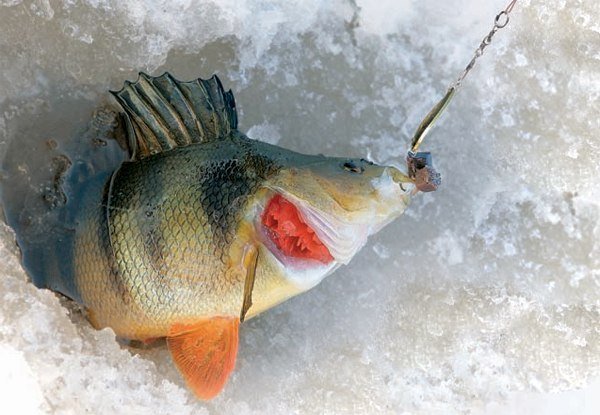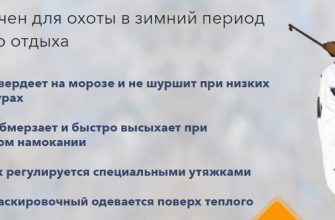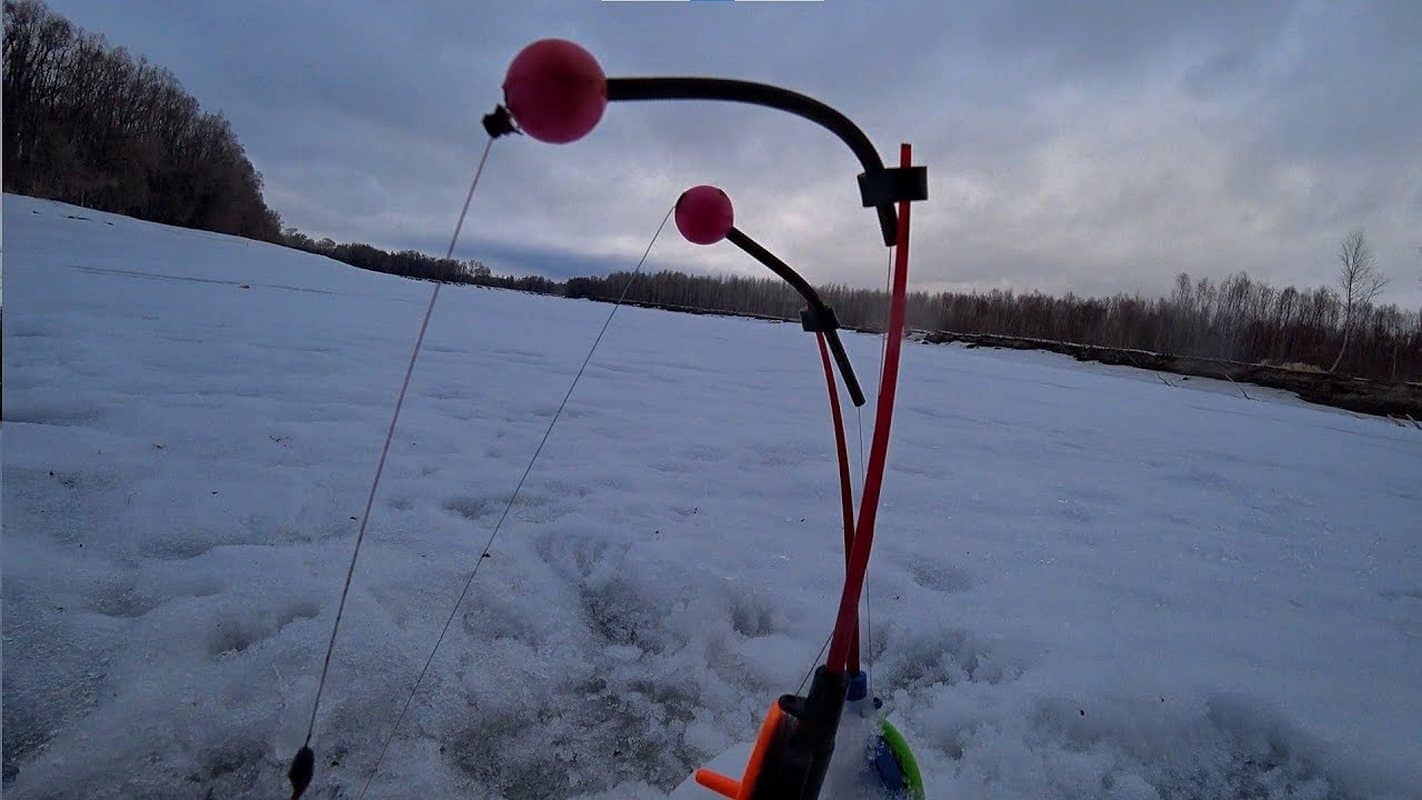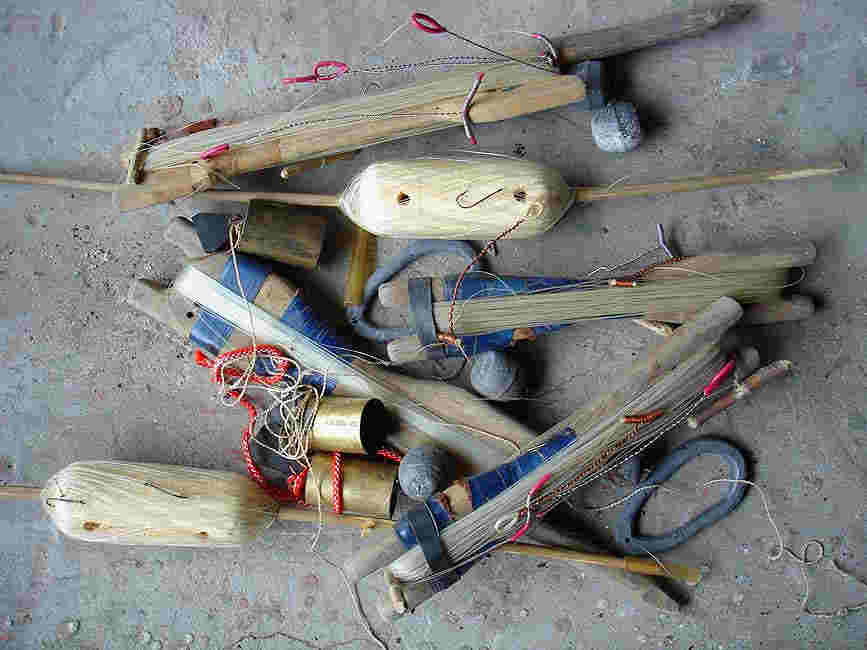Winter fishing for perch is one of the most popular pastime methods for winter fishing anglers, and trolling is a classic of the genre and stands out among others for its excitement and prospects, especially for active perch. But! You can catch a sailor in the old way – throw, pull and pull, or you can approach the process of spinning with feeling, really, with arrangement. This will not only increase the chances of success, especially in difficult conditions of the predator’s passivity, but also give special pleasure, as is usually the case, if you understand the very process of what is happening, you understand that you have squeezed out the maximum in the conditions in which you had to fish. It’s nice to feel like a professional who has mastered the intricacies of fishing and seemingly little things, but which just make up the overall picture of the result.
- Varieties of lures that are used for catching perch in winter
- Vertical lures with soldered and hanging hook
- Bottom spoons
- Lure option with a hanging hook
- How to choose / make a catchy perch spoon
- Algorithm of actions: on the pond and before
- Technique for spinning perch on various types of lures
- First ice fishing
- Blazing in the wilderness
- What to offer at the end of winter
- About tackle for trolling perch
- Поделиться ссылкой:
Varieties of lures that are used for catching perch in winter
There are several types of lures that are used when fishing for perch in winter. Each of them has its own characteristics and optimal conditions for use.
Vertical lures with soldered and hanging hook
The main type of bait, which is used for fishing perch in the water column and from the bottom (much less often). These lures are designed to play directly in the water column, in this case they work best, when using from the bottom it is better to use special bottom lures. The most active type of lure of the striped robber involves the use of just such lures.
Bottom spoons
Spoons adapted for catching perch from the bottom. Each animation cycle is set with the position of the bottom spinner at the bottom, from there it starts and ends the animation cycle there. In this position, the bottom vibrator shows the best result, this is provided for by the design. In the upper part of such a spoon, as a rule, there is a tee, which, in addition to spotting the fish, serves as an attack point, this is especially noticeable when the bait is positioned at a certain angle to the bottom during animation.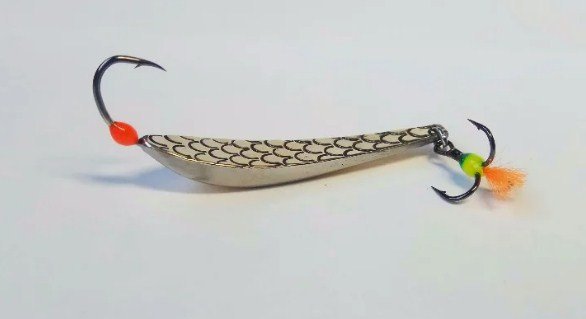
Lure option with a hanging hook
This version of the spoon (both bottom and vertical) is not new, it is used by some anglers when fishing for perch. The tee is mounted on a piece of the chain and framed with a decoration. When such a spoon falls to the bottom, the tee still hangs in a cloud of turbidity (bottom spoon) for a few seconds, or soars next to a spoon (vertical), especially if you equip it with a fluff, lurix or a foam ball. Striped is very partial to such things – additional snacks. We recommend for an extremely passive perch sleeping at the bottom in the wilderness.
How to choose / make a catchy perch spoon
A quality lure should produce a repeatable trajectory with the same type of wire. That is, it is necessary, whether it is a purchased bait, or a homemade one, it must be configured in such a way that a specific type of animation sets a certain type of movement of the spoon under water. High-quality commercial spinners possess this quality. Homemade products can be done by bending the body in several planes until the behavior is predictable and understandable.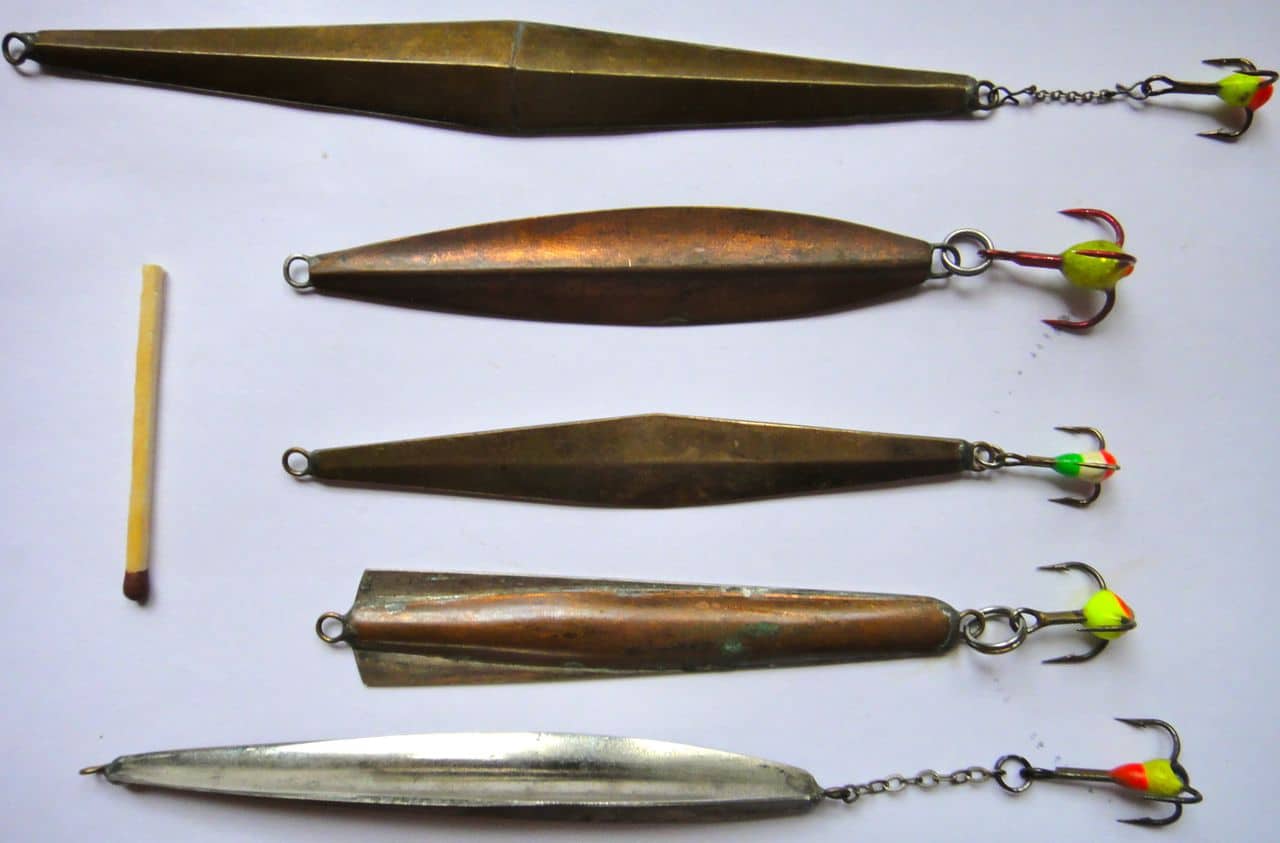
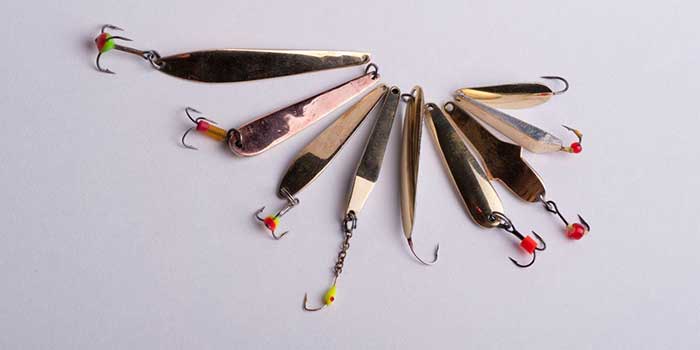
Algorithm of actions: on the pond and before
We select the weather and time of day when there are strategically more chances of successfully catching a perch. Days with stable pressure, thaws and at least no sudden changes in wind direction and pressure. Search for a predator in the reservoir using maps, typical campsites, depth research, information from local people. Depending on the stops and activity of the perch, the tactics of moving around the reservoir, the method of drilling holes are selected, spinners and their animation method are selected. The preferred tackle is selected. Read about where to look for perch throughout the winter
here .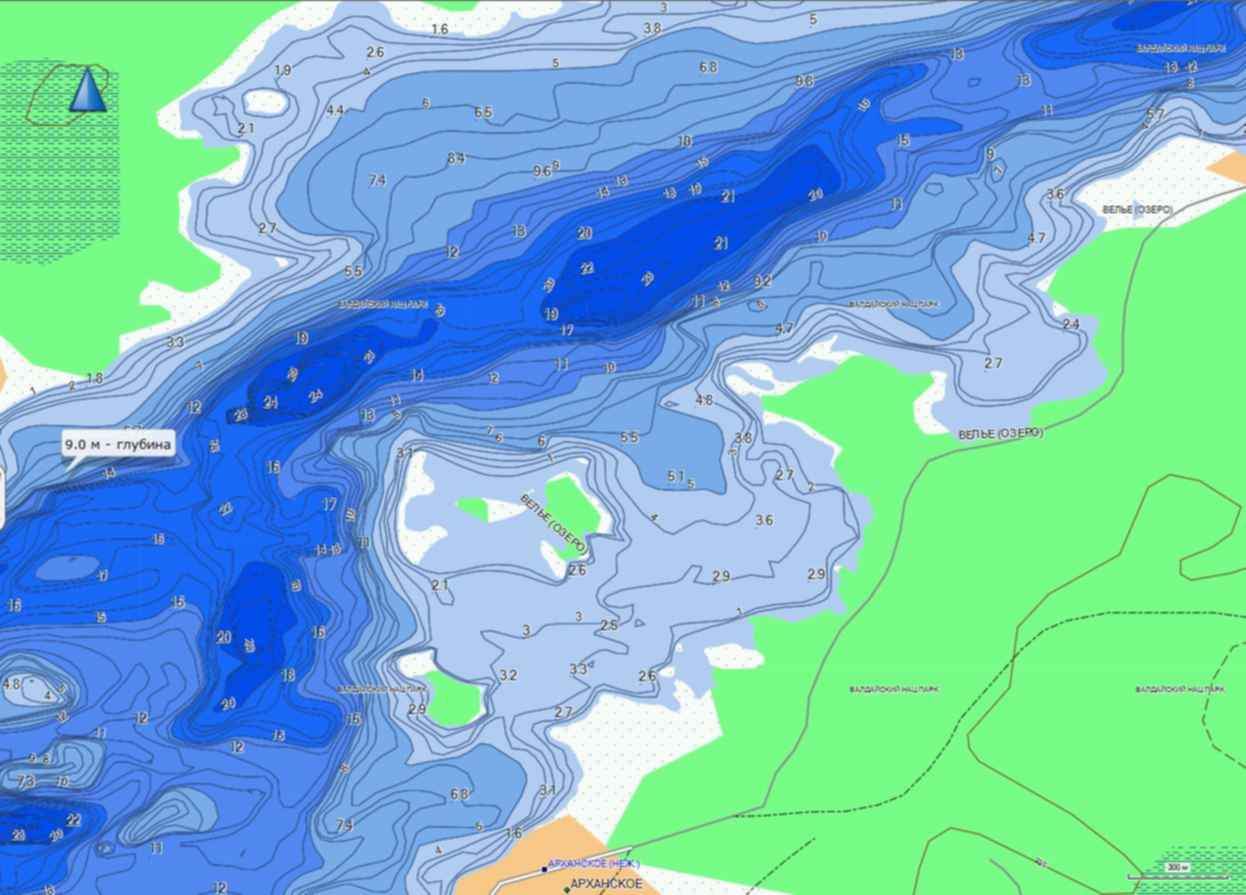
Technique for spinning perch on various types of lures
The relevance of using this or that type of spinner, as well as the type of its animation, largely depends on how the perch behaves, in which layer of water it stands, what it feeds on and how active it is. All these aspects are largely tied to a certain period of winter.
First ice fishing
At the beginning of freeze-up (during the first 3-4 weeks), the perch is active and moves widely across the water area, both horizontally and vertically. At the moment, it can be successfully caught in the coastal zone and at a dump from it in depth, near underwater vegetation, snags and bushes. It is during this period that the use of vertical lures for fishing the entire horizon is especially important.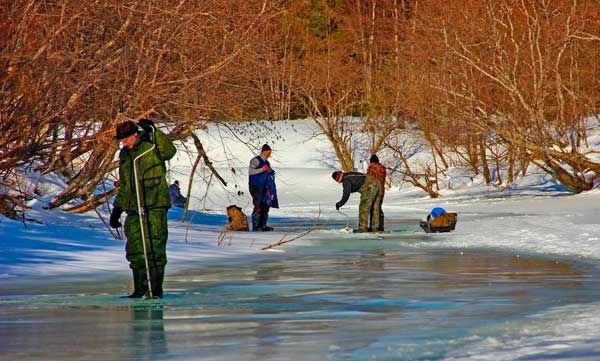
Often, it is on the first ice that you have to fish at depths of 1-2 meters, and therefore special care is needed when drilling holes and further behavior near them, since the fish is almost at the feet of the angler and any extraneous noise lowers the chances of success. For the same reason, it is recommended to drill immediately a batch of 10-15 holes at a distance of 6-10 meters from each other, so that the first one has time to rest by the end of the drilling session.
Larger individuals stray into small and medium-sized flocks, plying after the movement of the whitefish fry, which can hide behind any obstacles – a bend in the bank, a turn in the channel, various underwater objects on the water plateau. In order not to repeat ourselves, we advise you to study our material on
how to fish and where to look for perch , depending on the period of winter. There are many varieties of animation for vertical lures when fishing for perch. You can change not only the frequency and amplitude of jerks, the number and duration of pauses, but also the position of the rod in space. Ideally, you need to master at least 3-4 spinning techniques and change them periodically. The moment of animation change often agitates the perch, and it gets excited and grabs the bait. Basic spinners can be animated as follows:
- One technique involves positioning the rod parallel (or so) to the surface of the ice . This is a basic position and is used by most anglers. Short tossing of the spoon is made at the bottom. This method is good when the perch is active not at the very bottom, but at some distance from it. And it allows you to catch striped fish in the necessary, empirically found water horizon. The height of the toss is adjusted, you can either let the spoon fall to the bottom, or flash at any desired distance.
- Strong jerks allow you to set a more agitated and chaotic game of the bait, which is good in cases when you need to pull up a far-away predator. Usually applied on a new hole in the first minute or two, so that the perch can notice movement from afar.
- Weak to medium less dynamic jerks are the main drive. Short strokes with further recoil of the line and a controlled fall to the bottom (or to the desired horizon). Pause and repeat is given. It is very important to monitor the amplitude of the jerks so that there are no parasitic movements. For this, the emphasis of the working hand is placed on the knee, box, or stand.

- The second technique involves the vertical position of the rod with the nose to the hole . This version of the grip involves the use of the method – short pull (CD). In this case, the horizontal component in the offset of the spoon with short jerks (jerks) will be minimal, which means this method is suitable for catching a predator rubbing at the very bottom. Also, this method is more suitable for an already found flock, when you need to feed the bait on a small patch without excessive amplitude play (as you know, the perch prefers high-frequency, but low-amplitude play). With this type of animation, it is important to adjust the play of a particular spinner.
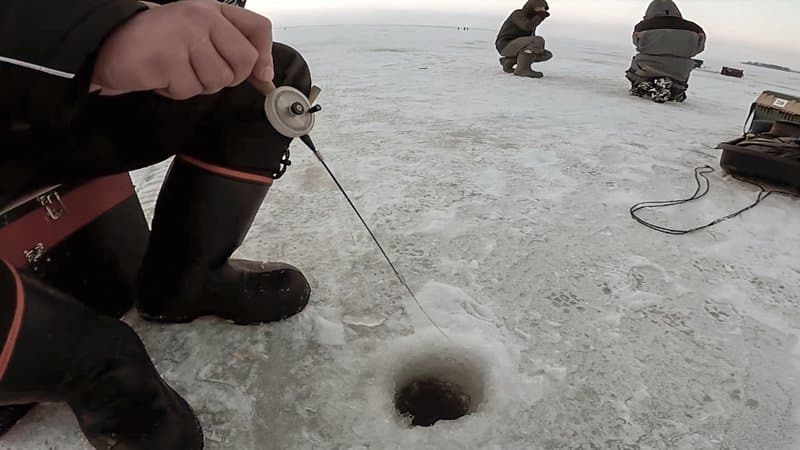
- You can also set an intermediate angle of inclination of the rod to the horizon, 45 degrees . It is logical to assume that in this case there will be something in between than when gripping the rod vertically and horizontally to the horizon. Such a grip is also popular, since in its case we do not go from one extreme to another and can diversify the animation of the bait.
- The classic for gripping the rod at an angle of 30-50 degrees is the release of the spoon to the bottom, then a pause of 2-4 seconds and one or two strokes. Leave to the bottom and pause. After 3-5 such iterations, we begin to stop the spoon just above the bottom. We make steps on the fall. Thus, gradually moving away from the bottom by 20-50 cm in search of a predator (maybe much more, but this is usually necessary in the spring, when the perch rises to the middle and upper layers). To provoke the okushatok to attack, you need to change all the components of the animation – the number and length of pauses, strength, sharpness, amplitude and frequency of jerks, length and height of steps. The steps are easy to tap with your knee or other hand, gradually lifting them up. Such a search in the animation allows you to quickly find the option that will be to the liking of the striped here and now.
- Stretches and pauses against the backdrop of a classic step . Everything is the same as in the previous version, but during the pauses, the spinners are pulled up / down by literally 1-2 centimeters. Often a blow follows at such a moment.
- Shallow dribbling like jigsaw . Cool wiring for passive perch using medium-sized spoons 2-4 centimeters. The whip is located between the index and thumb of the left hand and a fine drizzle, shaking between the phalanges of the fingers of the left hand, slowly lift the bait up with the right. It is somewhat reminiscent of a rewinder perch game . The amplitude of the detachment from the air depends on the horizon of the supposed activity of the sailors. You can alternate with a series of swings, a classic step. After the end of the phase, we drop the spoon to the bottom and give a pause.
- Work from the upper horizon downwards . The wiring is not for the lazy. The animation starts already on the descent. We lower the spoon down and work out jerks-pulls up, gradually lowering the level of the harvested horizon, lowering the position of the hand to the hole itself. It is good to use it along the last hard water, when the perch can rise to the surface itself in search of oxygen and food sources.
- Breaking through the horizon . The current method of posting in the spring and the beginning of freeze-up, as well as in order to motivate the most passive perch to attack. A series of jerks near the bottom, raise the spoon 50-70 cm and make a series of swings in this horizon, then another 30-50 cm up and another series of swings. Then we lower it to the middle position – swing and lower it to the bottom. It is convenient to carry out this type of posting while standing and with a fishing rod with a long whip, like a St. Petersburg fishing rod and others.
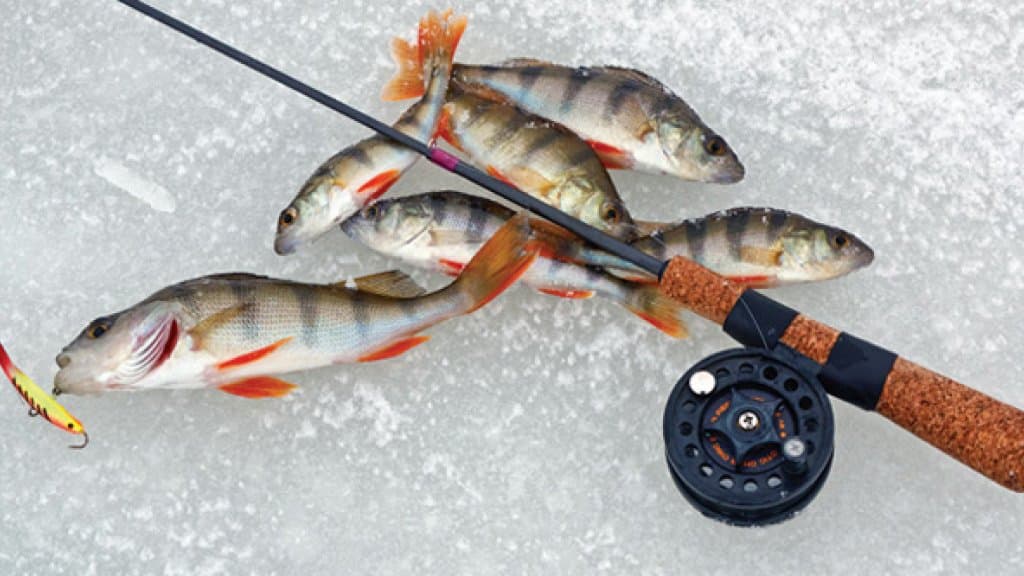
- The animation is a rattling nod . Works on hard nods. A standard classic step is being made or just explosions on one horizon. But the jerks are sharp. At the moment the spoon falls, the nod plays out several times, setting the fast rattling of the spoon in almost one place. This often tends to tease the passive bass. That is why it is successfully used in the wilderness. A pair of nod-baubles is selected empirically in the summer or in the bathroom. Not all nods can play this way, and not all spinners.
Classic spinner wiring: https://youtu.be/45t9TEwqf8Y
Interesting to know! Often a bite follows at the moment when there is a failure in the game of the bait that the angler has asked it. Therefore, the animation technique does not have to be brought to the ideal, it is not only unnecessary, but it may even turn out to be harmful.
Features of the game of vertical spinners, depending on the position of the fishing rod: https://youtu.be/Y7h8UlYDBpc Thus, if we compare the game with a vertical and horizontal grip, it is obvious that in the first case the same spoon will behave predictably and perform the same movements with each jerk, and in the second version it is chaotic with frequent failures. And from this it follows that when fishing for a passive perch, it is worth using a vertical pull with the most repeatable movements of the vertical, when fishing for an active one – a wide horizontal swing, setting a more intense game of the bait.
Blazing in the wilderness
In the wilderness, the perch rolls down to the deepest places and almost always stays at the bottom, while being in a passive state. Often at this time he prefers a quieter game of spinners, with dissatisfaction with the wide chaotic movements of the vertical spinner. He is more cautious and suspicious. At this time, bottom spoons come to the fore. They camouflage themselves at the bottom and this is the basic component of their catchability.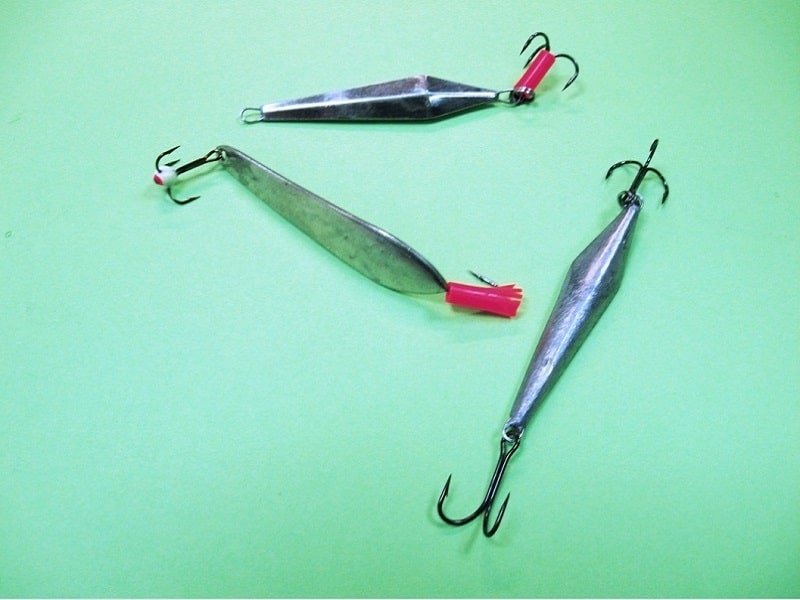

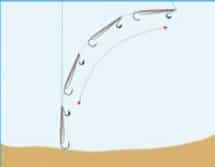
The game of spinners from a vertical position [/ caption] The
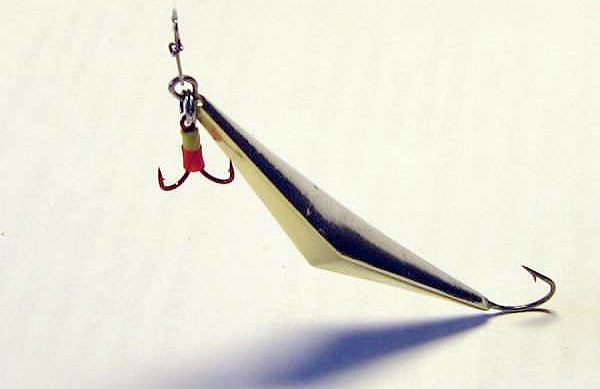
Therefore, the tactic is as follows – on a new hole we are trying to find a more or less active bottom lure fish with a flat profile, animating it with relatively aggressive jerks from a lying position on the bottom. Then we put the spoons with tapered profiles and start from the vertical (or 45 degrees), animate with short gentle jerks.
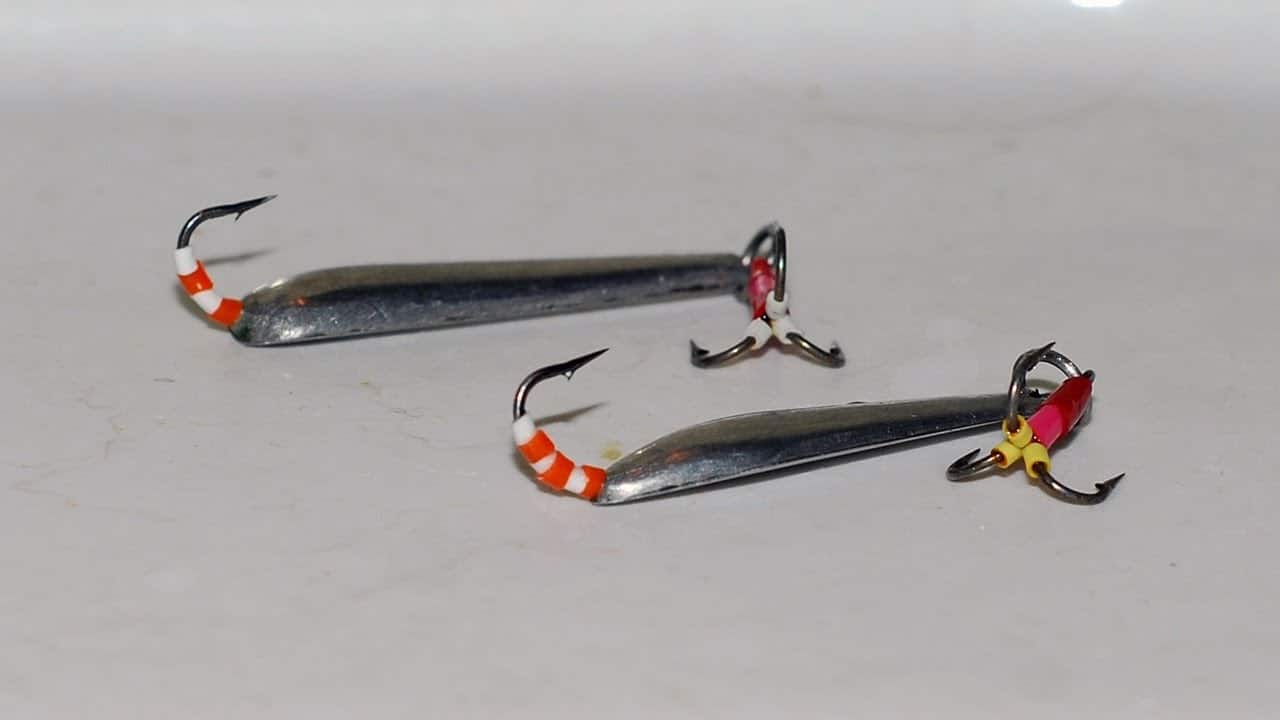
Important! You can deduce patterns – the vertical spoon catches smaller fish in larger quantities, but it is on the bottom spoon that you can catch large snouts, even if the number of them is not so large. Vertical on the active sailor, bottom on the passive. Vertical for animation and fishing in the water column, bottom for working on the bottom.

So the conclusion! To start fishing, we use fast flat bottom spoons with a torn and relatively sweeping game – for the fastest possible search for a perch, and then we catch the found perch and use dovetail spoons with slow animation and smooth play. Sharp game looks for perch well, but badly catches it!
When fishing for perch, the decoration on the hook is of great importance – the so-called point of attack. It can be a drop of epoxy resin, cambric, lurix, bead, beads. Often the attack follows the hook.
What to offer at the end of winter
The end of winter is characterized by the fact that the perch begins to actively move through the reservoir in search of food and oxygen sources. At the same time, it often rises to the very surface of the ice. Its activity increases, it begins to fill its belly before spawning. On the last ice, perch can be caught both on verticals and on bottom spoons. The types of animation are more active than in the deaf winter, but not as aggressive as at the beginning of the freeze-up. This is due to the fact that the predator is not yet fully agitated and full of caviar, and therefore its movements are not so fast. It is also worth considering when choosing the size of the spoon. The optimal will be 3-5 cm, depending on the shape and volumetric dimensions.
About tackle for trolling perch
The fishing rod for perch trolling is selected with a sensitive and resilient whip made of high modulus carbon fiber, fiberglass, etc. When snaking an active perch on a vertical, you can use a slingless tackle, usually the sensitivity of a properly selected whip is enough. If they fish for passive perch on bottom baits, then the presence of a sensitive nod is necessary. This is necessary in order to track the position of the spoon on the bottom, and as we found out this is a very important aspect. As a gatehouse, there can be a nipple, a clock spring, a plastic plate, as well as a nod of a nozzle.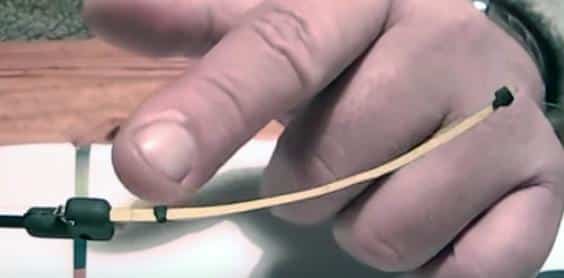

- bottom spoons usually weigh more than verticals;
- trophies flying into such lures are more solid;
- the load and negative impact when fishing on bottom lures is larger and more aggressive (it touches the tee, the impact of the soil, the fish is larger), then the diameter of the line is also;
- so that the stretching of the monofilament is less and the game at great depth does not lose its effectiveness.
Working diameter 0.18-0.22 mm. The pike also loves to attack perch with essentially spinners, especially bottom ones. But we prefer to treat the cuts philosophically, and not use the leash. Any leash changes the game of the spinner for the worse, the perch reacts very negatively to this. And one pike tail or cut is not worth it. Perch lancing can be promising during the entire freeze-up period, even in the most gloomy wilderness, you just need to know its habits, routes of movement and parking, as well as preferences in baits and their supply, depending on the reservoir and the stage of winter. The goal of successful winter fishermen is to gain this knowledge and apply it in practical exercises in order to get handsome humpbacks out of the water in elevator mode.
